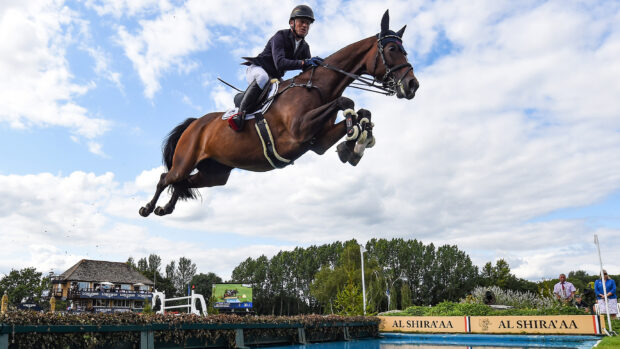The recent weather has been atrocious, fields are flooded, bridleways are closed and you cannot travel to indoor schooling facilities due to the foot and mouth crisis. But do not despair – there are other methods of preparing for the show season when it eventually gets underway.
Now the clocks have gone forward, it’s an ideal time to change your routine in preparation for the summer. When designing a spring regime take into account your time limitations and the facilities that are available.
Native ponies that have wintered out are going to be extremely hairy at the moment, and should be brought in at nights. If your pony’s feathers, fetlocks, tail and underbelly arecaked in mud then you need to wash it off. Use lukewarm water and make sure you dry the pony off with towels or dry straw.
Stabling a wet and muddy pony will result in an increase in costs as bedding gets saturated overnight. To combat this wash and dry the pony off before putting to bed for the night and change your bedding routine.
If you are currently using shavings, push the bed back and invest in one or two rubber mats can be put at the front of the stable with a thin layerof shavings on top. Feed at the front of the stable and the residual wet and mud will drop on to the mats while the pony is eating, protecting the majority of the bedding.
The same rules can be applied to a straw bed and you will soon reap thebenefits. Although rubber matting can be expensive, one or two mats to the front of the stable will pay for themselves. They will also allow you to trim and groom in the stable without the hair getting mixed into the bedding.
Once your pony is dry, put it to bed and get up early the next day to start grooming off the residual mud – only then will you be able to commence your tidying and preparation regime.
Groom your pony in the usual way and when finished disinfect your brushes. Bugs and lice are likely to be lurking, so cleanliness is always important.
Depending on your native’s breed, some trimming may be allowed. Always check with your breed society before you start cutting, pulling and clipping.
Trimming of “cats whiskers” and long hair that will naturally fall out when the summer coat arrives can be removed at this stage. Be careful not remove essential body coat which maintains warmth if you are not intending to rug.
An initial action plan for a native that has wintered out
- Remove cat hairs by clipping or trimming from forearms, elbows and underbelly.
- Remove long hair taking close to belly underneath. Do not clip an unrugged pony, only take off the excess long hair that collects mud.
- Remove the excess hair from under the jawline.
- Remove the excess hair from ears (the long hairs that stick out)
- Remove the excess length of tail. Remember to check if your native has a high tail action before you take the tail off otherwise you will end up with a short tail too short which will look silly and amateurish.
Your native will now look much better. If the pony is to be turned out then your regime will be mainly mornings and evenings but if the pony is to be stabled then little and often is the key.
The key to preparing for shows is to balance the happiness of the pony and its fitness. Your native should not be allowed to becoming bored and stale or overfresh and unmanageable. Know your ownlimitations with time, and the character of the pony, to achieve maximum success.


